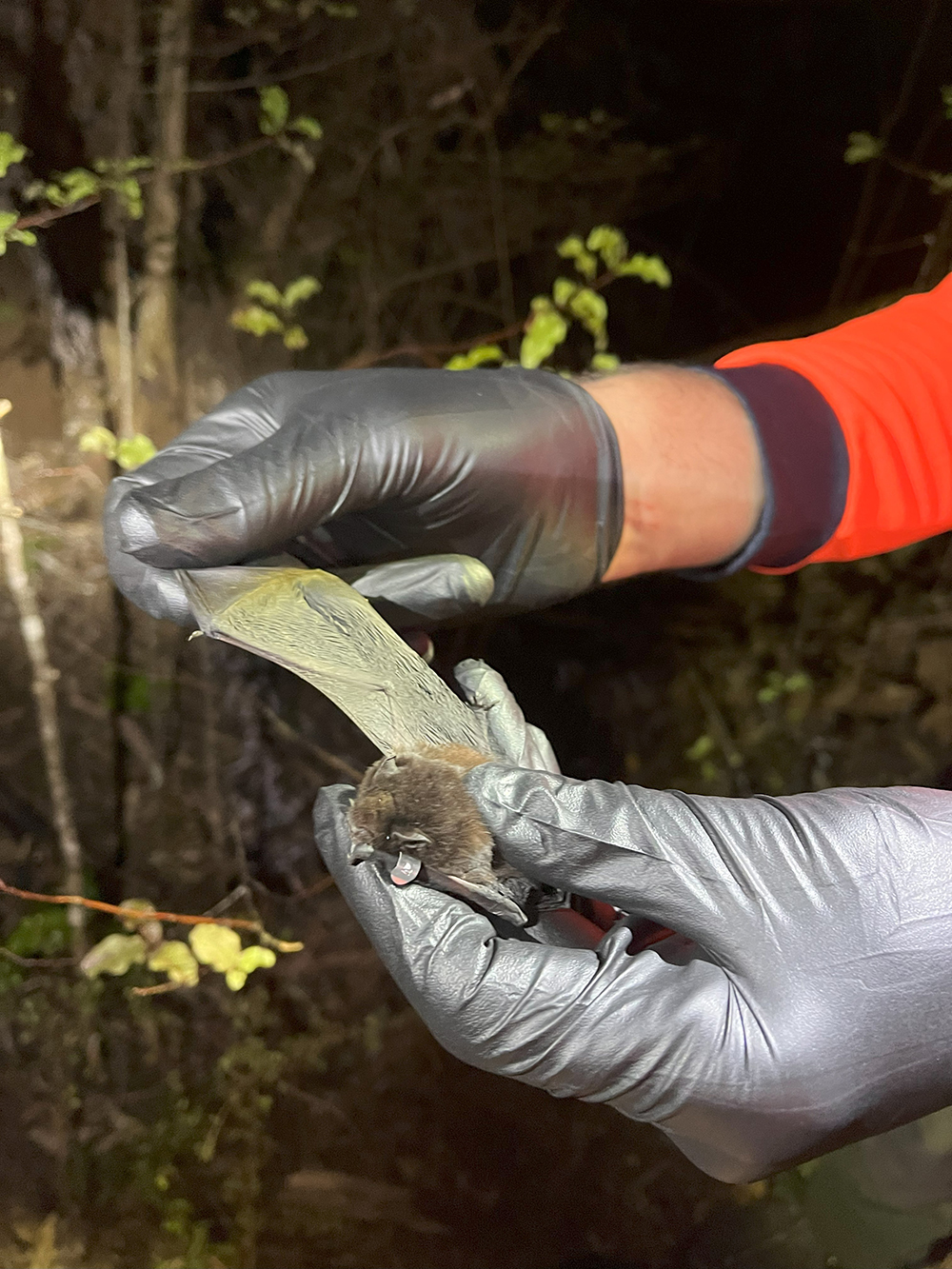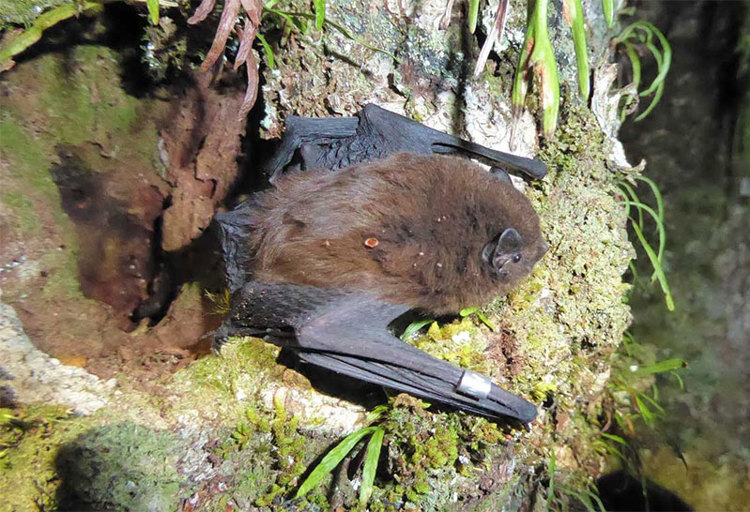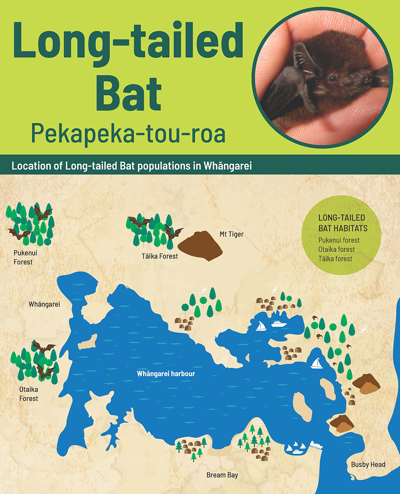Bats (pekapeka)
Bats (pekapeka) are New Zealand’s only native land mammal. We have two extant species of pekapeka and both are endemic to Aotearoa (found nowhere else on earth); the long-tailed bat or pekapeka-tou-roa (Chalinolobus tuberculatus) and the short-tailed bat or pekapeka-tou-poto (Mystacina tuberculata). In Te Taitokerau we have both the long-tailed bat and a subspecies of the short-tailed bat, known as the Northern lesser short-tailed bat (Mystacina tuberculata aupourica). The latter is found at only two sites in Northland as well as on Hauturu Little Barrier Island.
The Northern lesser short-tailed bat is classified as Threatened – Nationally vulnerable and long-tailed pekapeka have the highest threat classification available of Threatened - Nationally Critical. This means they face an immediate high risk of extinction and require urgent conservation action.
Many residents of Taitokerau are surprised to learn that there are long-tailed bats living in forests in Whangārei and across the Northland region. In Whangārei these bats have been detected on acoustic devices in Pukenui, Ōtaika, Glenbervie, the Tutukākā Coast, Tāika, Parua Bay and most recently in Pukekauri forest in Ruakākā. It is unknown if the bats in these locations are isolated populations or form part of a larger colony that calls Whangārei home.
Pekapeka-tou-roa are a cryptic species and often go unnoticed, as they are nocturnal (active at night) and leave little sign of their presence. They are insectivores that hunt flying insects such as mayflies, moths and beetles, catching them mid-flight. These intriguing creatures use echo location to navigate in the dark and find their food, and are highly mobile, capable of flying up to 60km/h. Due to their preference for roosting in tree cavities, they are increasingly vulnerable to predation from rats, stoats, possums and cats.
Long-tailed bat facts
- Dark brown/black furry torso with membranous wings
- Wingspan c25cm
- Weight 8 to 11g, about the weight of a single AAA battery
- Roost in any cavity that can fit a chicken nugget in it, but prefer large, old trees (native or exotic). They have also been known to roost in the odd garage.
- Have a home range of over 100km, with over 100 roost trees they change frequently between.
- Highly social animals, with breeding females forming maternity roosts
- Breeding females are thought to give birth to only one pup per year
- Emit high-frequency sounds that are largely inaudible to the human ear but can be picked up by a bat detector.

A certified bat handler measuring wing length and identifying the age of the bat during a bat trapping and tagging project in Pukenui Forest.
How you can help
Protect native forest in your rohe (area) by undertaking effective predator control. Backyard trapping will also help provide a safer habitat for bats. By trapping outside a core forest area, a wider buffer zone is created to protect the areas where bats are vulnerable.
- Start small with one or two rat traps
- Use a trap box to minimise harm to pets and children
- Form a trapping group with neighbours and friends
- Find inspiration from within our community by connecting with local groups like Tiakina Whangārei. Go to: tiakinawhangarei.co.nz to find out more and get involved.
- Find further information on effective pest control, visit our Pest Control Hub
Check before you chop
One colony of bats can use up to 100 roost trees within their home range, and cycle through their preferred roosts. Protecting standing dead trees and old or large trees helps pekapeka by maintaining their natural habitat. Pease ask for advice before removing large old trees, including exotic species, by contacting our biodiversity team at: biodiversity@nrc.govt.nz or the Department of Conservation: www.doc.govt.nz
If you see a bat
Complete the encounter form below or call us on freephone: 0800 002 004.
The NRC has statutory obligations to monitor and report on threatened species and to maintain indigenous biodiversity.
Data from reported sightings will help NRC and other agencies to understand the species presence in Te Taitokerau.
Your personal details will not be shared when you report a sighting. No data will be publicly available online.




